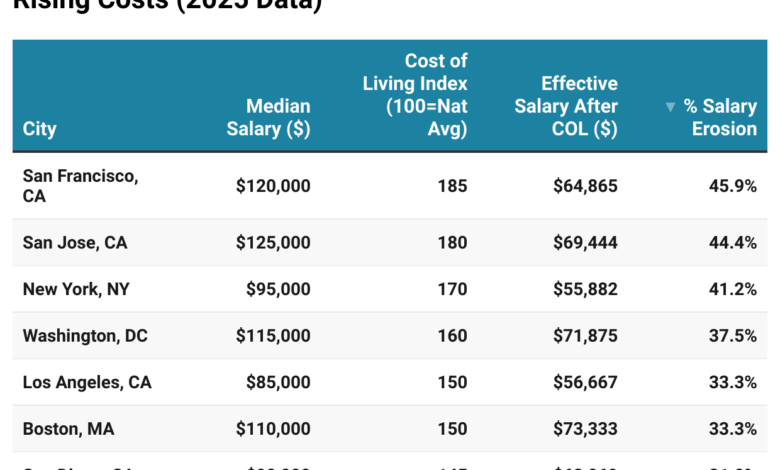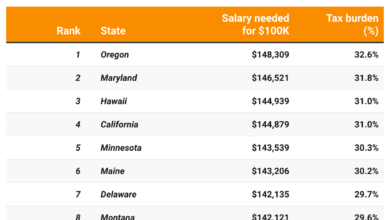Which U.S. Cities Are Seeing the Fastest Salary Erosion from Rising Costs (2025 Data)

Key Findings:
- San Francisco and New York lead the list for salary erosion, where six-figure incomes shrink by 40–46% after cost-of-living adjustments.
- Coastal cities like San Diego, Boston, and Washington, D.C. also see significant erosion due to expensive housing and services.
- Midwestern cities such as Cleveland, Detroit, and Indianapolis stretch salaries further, with some showing “negative erosion” (meaning income actually goes further than the national average).
- Southern metros like Tampa, Orlando, and Charlotte remain relatively affordable, though inflation is starting to chip away at paychecks.
In 2025, earning power isn’t just about how much you make — it’s about how far your salary stretches in the face of rising housing, healthcare, and everyday costs. A $100,000 salary in one city can feel like $60,000 in another, depending on the local cost of living. Using new 2025 data, we compared median salaries in 30 major U.S. cities against cost-of-living indexes to see where workers are losing the most (and least) to inflation and high expenses.
30 U.S. Cities Ranked by Salary Erosion (2025)
Here’s the full comparison of median salaries, cost-of-living indexes, effective salaries, and percentage loss of purchasing power:
Cost of living is rising everywhere, but the impact is not evenly distributed. Workers in tech hubs and coastal metros often command high salaries, yet much of that pay is eaten up by housing and daily expenses. Meanwhile, workers in Midwestern and some Southern cities enjoy lower costs, making their paychecks stretch further.
For job seekers, remote workers, and families considering relocation, these differences highlight the importance of looking beyond the top-line salary number. A $90K job in Cleveland might actually give you more real-world financial comfort than a $120K offer in San Francisco.




